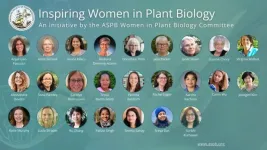(Press-News.org) MIAMI, FLORIDA (MAY 23, 2024) – A new treatment approach using an older drug may enable more patients with high-risk blood cancers to receive transplanted stem cells from unrelated, partially matched donors, according to a study conducted by researchers at Sylvester Comprehensive Cancer Center at the University of Miami Miller School of Medicine and colleagues.
Results to be presented at the annual meetings of the American Society of Clinical Oncology (ASCO) and the European Hematology Association suggest the new approach may expand the donor pool, with patients from underrepresented racial and ethnic groups standing to benefit the most.
Finding a matched donor has long been a major hurdle for patients with blood cancers who need bone marrow or blood stem cell transplants.
Patients without an eligible family member often turn to the National Marrow Donor Program. The registry contains more than 40 million potential donors, but not everyone finds a match, particularly people from underrepresented racial and ethnic groups. Only about half of Hispanic and a quarter of Black patients can find a fully matched donor, compared with more than 70% of white patients.
But the search for a donor has become a lot easier with the repurposing of cyclophosphamide, an older drug. The new approach – administering cyclophosphamide several days after transplantation – is leading to successful outcomes. New data will be presented May 31 at the ASCO meeting, with findings showing high rates of success in patients receiving blood stem cells from unrelated, partially matched donors.
“The outcomes seem to be very comparable to those of a fully matched donor,” said Antonio Jimenez Jimenez, M.D., a Sylvester clinician and researcher who has been a key primary investigator in the studies supporting the use of cyclophosphamide. He led this study alongside researchers from the National Marrow Donor Program, City of Hope Medical Center, and Memorial Sloan Kettering Cancer Center, among other institutions.
City of Hope researcher Monzr Al Malki, M.D., will present the findings at ASCO. Jimenez Jimenez will present the data at the European Hematology Association (EHA) annual congress in Madrid, June 14.
The approach is already being taken up widely at Sylvester and elsewhere, leading to more patients finding a donor and receiving lifesaving treatment. “It’s been transformational,” Jimenez Jimenez said.
Donor compatibility is determined by a set of protein markers on blood cells called HLAs (human leukocyte antigens). Jimenez Jimenez said HLAs are the “QR code” of the immune system. The chance that a sibling has a fully matched HLA is 25%, and the chance of a partial sibling match is 50%. With the increasing use of cyclophosphamide over the last decade or so, partially matched relatives have increasingly been successfully tapped as donors.
Cyclophosphamide counteracts a deadly side effect of transplantation called graft vs. host disease (GVHD). In this condition, the transplant mounts an immune attack on the patient. The drug is thought to mitigate the effect of the cells that mediate GVHD.
More recently, researchers have been asking if cyclophosphamide also works for transplants from partially matched donors who are unrelated. In one key previous study, Jimenez Jimenez and his colleagues showed that the drug yielded high survival rates in 80 patients receiving bone marrow transplants from partially matched, unrelated donors.
The new study assesses cyclophosphamide treatment in patients receiving peripheral blood stem cell (PBSC) transplantation. This stem cell source has largely supplanted bone marrow transplantation, partly because of the ease of donation via a procedure that collects the cells from the blood.
In this initial phase of the study, the researchers examined data from 70 adult patients with advanced blood cancers. Patients received a “reduced-intensity” conditioning regimen to prepare them for transplantation, followed by stem cells from unrelated, partially matched donors.
At ASCO, the researchers will report an overall high survival rate of 79% at one year, comparable to survival rates seen with fully matched donors. Other metrics were also promising, Jimenez Jimenez said. After one year, 51% of patients were free of GVHD and had not relapsed.
The data are “impressive,” Jimenez Jimenez said, particularly since the study enrolled high-risk patients and the average age was 65. The study was also “very permissive” with the degree of donor mismatch allowed, he said.
Donors had match levels from 4/8 to 7/8 on a one-to-eight scale, in which eight corresponds to a perfect match across eight key HLA markers. At match levels of 5/8 and above, more than 99% of people from a wide range of racial/ethnic groups are expected to find a donor.
The new approach means that more patients can find a donor and receive treatment. It also means that they can often find better donors, such as younger individuals with healthier grafts, Jimenez Jimenez said.
The findings are particularly relevant for medical centers with highly diverse patient populations, like Sylvester, the researchers said. Patients are overcoming the barriers to finding a donor in the registry, including the high proportion of white donors and the genetic diversity of mixed-race individuals, which can complicate HLA matching. Patients no longer need a perfect match.
The new findings are part of an ongoing phase 2 study enrolling about 300 patients at more than 30 medical sites, including Sylvester. Patients in a second arm of the study are receiving a more intense regimen prior to transplant, designed to ablate the bone marrow. A third arm investigates pediatric patients.
Jimenez Jimenez and his colleagues are also investigating how to optimize cyclophosphamide delivery, combine it with other treatments, minimize toxicity, and address other related questions.
about Sylvester research on the InventUM Blog and follow @SylvesterCancer on X for the latest news on its research and care.
# # #
ASCO ABSTRACT TITLE: Post-transplant cyclophosphamide-based graft-versus-host disease prophylaxis following mismatched unrelated donor peripheral blood stem cell (PBSC) transplantation.
ABSTRACT: #6503
END
MIAMI, FLORIDA (May 23, 2024) – Coral Olazagasti expected a relatively smooth transition when she moved to New York to start her residency after graduating from medical school in her native Puerto Rico. But that proved wishful thinking.
She not only experienced major culture shock, but also her superiors and colleagues often chastised her for speaking too loudly and joked about her accent.
“Puerto Rico is a U.S. territory so when I moved to New York, I thought it wasn’t going to be a big change,” said Olazagasti, ...
The 2024 annual meeting of the American Society of Clinical Oncology (ASCO) will take place in Chicago and online May 31-June 4.
Below are highlights of Fred Hutch Cancer Center research to be presented at the conference and experts available to comment on news. You can follow Fred Hutch on social media for additional updates and check out Fred Hutch booth #14018 in the exhibit hall.
For interview requests with Fred Hutch experts, please contact media@fredhutch.org.
Prostate cancer
Prostate cancer is the most common cancer among men in the United States and, according to the National Cancer Institute, ...
Scientists have known for years that a lattice of blood vessels nourishes cells in the retina that allow us to see – but it’s been a mystery how the intricate structure is created.
Now, researchers at UC San Francisco have found a new type of neuron that guides its formation.
The discovery, described in the May 23, 2024, issue of Cell, could one day lead to new therapies for diseases that are related to impaired blood flow in the eyes and brain.
“This is the first time anyone has seen retinal neurons using direct contact with blood vessels as a way of guiding them to form these precise 3-D lattices,” said ...
The American Society of Plant Biologists (ASPB) Women in Plant Biology Committee recently named 25 Inspiring Women in Plant Biology to celebrate their achievements and inspire future generations of female plant biologists. This committee, dedicated to addressing particular concerns to women scientists and promoting the inclusion of female plant biologists throughout the Society and profession, created this list with input and nominations from the community.
“This initiative was inspired by two things: First, our desire to improve recognition of inspiring women scientists. We have had ...
Speaking at the World Health Assembly, authors of a new Lancet Series call for urgent global action on antimicrobial resistance (AMR), and ensuring sustainable access to antibiotics through:
Intensifying efforts to promote vaccination, access to safe water and sanitation, and hospital infection control, thereby reducing infections and the use of antibiotics, which protects their long-term effectiveness.
Expanding access to existing and new antibiotics, which could save many lives lost to bacterial infections.
Increasing investment in new antibiotics, vaccines and diagnostics that are designed to be affordable and ...
Inadequate access to simple elective surgery in developing countries is storing up future health problems for patients and may create a spiral of future health complications putting more people’s lives at risk, a new study reveals.
Analysing the experience of more than 18,000 patients in 640 hospitals across 83 countries, researchers, experts used hernia repair to represent elective health care, concluding that such treatments are essential to prevent over-reliance on emergency systems.
The study reveals ...
The newly released Cass Review on transgender care for young people has been pivotal in the UK, where the prescription of puberty “blocking” drugs outside of research protocols has now ceased.
But in the United States, where the treatment-intensive, “gender affirming” model of care is the norm, the impact of Cass’s four-year investigation and final report has been largely ignored, finds journalist Jennifer Block in The BMJ today.
The review concluded that the evidence on use of puberty blockers and hormones for children and teens experiencing gender ...
Artificial intelligence software has been developed to rapidly analyze animal behavior so that behaviors can be more precisely linked to the activity of individual brain circuits and neurons, researchers in Seattle report.
The program promises not only to speed research into the neurobiology of behavior, but also to enable comparison and reconcile results that disagree due to differences in how individual laboratories observe, analyze and classify behaviors, said Sam Golden, assistant professor of biological structure at the University of Washington School of Medicine.
“The approach allows labs to develop behavioral procedures however they want and makes it possible ...
Barrow Neurological Institute has opened a new cutting-edge research center that is expected to revolutionize neurological research and expand Phoenix’s research footprint into the areas of environmental neurology and health equity.
The Barrow Neuro Analytics Center, located at the Park Central property in the Phoenix Medical Quarter, comprises a 10,099 square-foot dry laboratory housing 10 principal research investigators and their dedicated teams. These experts delve into critical areas such as environmental epidemiology, advanced neuroimaging, global health, neurological drug development, health ...
Integration of pharmacies with physician practices, where on-site pharmacies open at physician practice locations, is a growing trend in cancer treatment. However, little is known about how this integration affects drug utilization or expenditures, along with other aspects of the patient experience.
A study published today in JAMA Network Open compared the outcomes of patients treated by oncologists whose practices integrated with pharmacies, to those of oncologists that did not integrate. Researchers found a slight increase in utilization of oral oncology drugs, but no significant change in expenditures on the drugs.
In addition, there were no discernible ...


